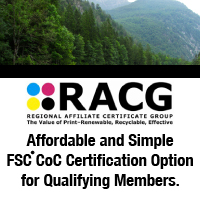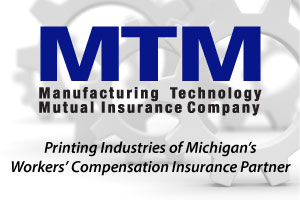by John Foley, Jr., CEO of interlinkONE and Grow Socially

In today’s technology-driven world, your company’s website is arguably its most important marketing tool. As such, the content and design of the website should accurately reflect your vision, services, brand, and ideals. A poorly designed or dysfunctional website could cost your business a substantial amount of potential revenue.
It’s time to take a good look at your website. The first step to- wards improving your corporate website is knowing which critical mistakes you’re currently making, and how you can fix them. Does your company or organization need a website makeover? If you’re not sure, here’s how to tell.
1. Poor Design Mobile: There’s nothing wrong with wanting a unique website, but too much creativity in design can result in a loss of clarity, focus, and appeal for your organization’s target audience. Your target audience must play a key role in influencing the design of your website. Younger markets may be more attracted to websites with youthful imagery and color schemes, while older target audiences may prefer a larger font size and simpler designs. By clearly identifying your target audience in advance, you will be able to create a website that speaks directly and efficiently to your customers. This, in turn, will provide them with a positive business experience.
A corporate website design should be relatable to the user and make him or her feel in control. Images and animation are a plus when used properly. The excessive use of images, however, will only detract from the website’s focus and clarity. A good idea would be to incorporate visual banners that feature your target markets and highlight specific products and services. Banners can be changed and updated regularly to maintain relevancy. The right font is also important for legibility; small or atypical fonts make text difficult to read, defeating the purpose of using the website as a marketing tool. Readability is a crucial element of any successful website.
Pop-up windows, advertisements, and auto-playing videos or sounds are other distractions that can detract from a website’s function and design. Think of yourself as a consumer; do you like websites that have pop-up advertisements or images flooding each page? Chances are the answer is no. A simple design that’s well organized, has visual appeal, and utilizes readable fonts will be more effective in the long run.
3. Disorganized, Non-Relevant Content: A website’s design may attract attention, but it is the content that will ultimately drive consistent traffic to a site, and keep people engaged while visiting it. Content can ultimately determine the success or failure of a new website. Homepage content should be well structured and designed to accurately reflect what your company has to offer. A cluttered or overly flashy homepage can turn potential customers off from the start. Can visitors determine what your company or organization does within seconds of reaching the homepage? If not, it may be time to consider a re-design.
Text that does not utilize page titles, headings/sub headings, bullets, or paragraphs makes it more difficult for users to find the information they need. Quality, not quantity, is what consumers want from contemporary business websites. According to Forbes Magazine, visual options are more effective when kept to a minimum. Also, remember that the copy used on your website also directly impacts its search engine optimization (SEO) ranking. This is so crucial because prospective customers should be able to find your website online simply by using a quick search.
Website content should also be up to date and relevant to the visitor. Unnecessary or outdated content reflects poorly on a company’s image, giving visitors the impression that your business has little interest in meeting the needs of the public. By posting regular, updated content, your company will benefit from greater consumer interest and a higher ranking on Google’s search engines to generate even more traffic to your site.
3. Lack of Inbound Marketing Opportunities: In order to convert website visitors and build your online following, you need to be taking advantage of inbound marketing opportunities. Inbound marketing allows prospective customers to fill out forms or landing pages that are directed to your sales team. This way, prospects are coming to you willingly, and the need for outbound, direct marketing campaigns is eased.
As important as inbound marketing is, many businesses and organizations neglect to include these calls to action on their website. A call to action may be a request to purchase a product, download content, register for more information, subscribe to a newsletter, share comments, or more. The ultimate goal of inbound marketing and calls to action is to encourage users to initiate an inquiry and become a lead for your sales team to follow up on. Your inbound marketing devices and calls to action should be simple, clear-cut, and placed in strategic locations on the website where they can easily be found.
4. Flawed Navigation: Successful websites are quick and easy to navigate, so visitors don’t become frustrated and waste their time looking for information. A clear sitemap and simple navigation are important aspects of your corporate website design, as they enable visitors to find exactly what they’re looking for within a short amount of time. When using text for navigation, remember to be brief and“to the point.”Hyperlinks should be clearly visible; dead links should be avoided at all costs. The use of headers, footers, and a main menu should be consistent throughout the site. All subpages should be easily accessible also.
In addition, your website should include links to relevant content throughout all pages. Never hand your audience the chance to walk away without making an impression. At the end of each page, suggest other relevant pages and interesting content. Your sitemap should also be designed so visitors can easily navigate their way back to the main pages, including, but not limited to, the home, contact, and services pages. Easy navigation makes a business website more efficient and provides clarity to its users.
5. Lack of Mobile Capability: Today’s average consumer is very busy, which should not be a surprise to anyone. Now more than ever, accessibility is a must for any successful website. As people are constantly multi-tasking and obtaining information on the go, there is no arguing the importance of responsive web design. Your audience expects instant connectivity wherever and whenever they desire. This includes web browsing on the go via mobile devices.
A Google study by market research firms SmithGeiger and Sterling Research revealed that 67% of consumers were more likely to conduct online business with companies that had a mobile compatible website. A great deal of Internet browsing today is conducted via mobile devices. If your website lacks mobile compatibility, you could very well be losing out on valuable revenue opportunities to competitors.
Does Your Website Pass the Test?
Ultimately, your website should be the hub of all marketing efforts for your company. It is your organization’s face to the world, and often provides your target audience with a first impression of your business. For this reason, it’s essential to keep your website up to par with your audience’s expectations. So, with that said, take a long look at your company’s website. Is it making any of the mistakes listed above? If so, it may be time for a new website. The bottom line is to invest in a quality website. It will pay off.






